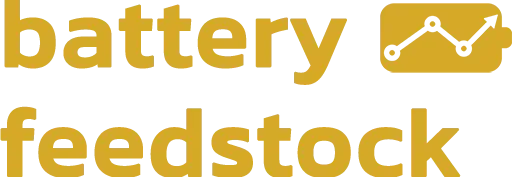Lithium Market: Growth, Projects and Technology
Chinese NEV production and profits remain strong even as Guangzhou suspends vehicle trade‑in subsidies. NIO’s standard 100 kWh pack and reduced battery‑leasing prices highlight consumer demand. Gotion and Salt Lake are adding major lithium‑chemicals capacity, while international projects in Canada and Europe aim to localise supply. Supply tightness persists—Chinese lithium‑hydroxide output fell 13% in August and should rebound modestly. Policy reforms such as the EU’s EPR regulation and a breakthrough 600 Wh/kg lithium‑metal battery highlight the industry’s shift toward higher energy density and recycling.
NEV momentum and policy shifts
China’s new‐energy vehicle (NEV) sector maintained robust growth in the first half of 2025. Publicly listed companies’ net profits rose more than 30%, supported by strong subsidies and consumer enthusiasm. However, policy changes are emerging. Guangzhou announced that its vehicle trade‑in subsidies would be suspended from 30 August 2025, although residents who completed both new‑car and used‑car invoices before that date can still apply for a subsidy. Such changes signal that local governments are confident enough in NEV adoption to scale back incentives.
Consumer demand also continues to climb. NIO made its 100 kWh long‑range battery pack standard across all models but kept vehicle prices unchanged, while the battery‑as‑a‑service purchase price was reduced by 38,000 yuan, signalling a push to broaden the appeal of long‑range EVs. Flexible rental options for 75 kWh packs remain available, allowing buyers to tailor costs to their usage.
Investment in new capacity
Despite the policy adjustment, capital investment into lithium supply chains remains aggressive. Gotion High‑Tech announced a 20 GWh intelligent manufacturing base in Nanjing, with total investment capped at 4 billion yuan. The project should enhance the company’s competitiveness and expand domestic supply for lithium‑ion batteries. Upstream, Salt Lake Co. reported a half‑year net profit of 2.515 billion yuan, even though revenue declined slightly. The company’s 40,000 t/y lithium chemicals project is 71% complete and slated for trial production by the end of September, doubling its total lithium chemicals capacity to 80,000 t/y.
Internationally, Frontier Lithium is advancing its Thunder Bay refinery on Mission Island, with a feasibility study targeting 20,000 t/y of lithium hydroxide – enough to supply around half a million EVs annually. In Europe, Rock Tech Lithium and Ronbay signed a vertical integration agreement that will deliver battery‑grade lithium hydroxide from Guben, Germany, to Ronbay’s cathode plant in Poland, shortening supply chains and reducing reliance on imports. Outside of China, Ghana’s first lithium mine at Ewoyaa is mired in a tax‑concession debate; Atlantic Lithium’s subsidiary wants to halve royalty rates to 5%, arguing that low lithium prices have cut expected post‑tax returns to 13.6%. Independent analysis suggests that even at current prices the project could still deliver a 28% return, illustrating the tension between government revenue goals and attracting investment.
Production and pricing dynamics
Chinese lithium‑hydroxide output dropped 13% month‑on‑month in August as a leading smelter underwent maintenance and several causticisation plants scheduled downtime. A 12 % rebound is expected in September, yet production would still remain roughly one‑fifth below last year’s level. On the price side, lithium‑hydroxide prices softened through late August but the decline was limited because downstream demand remained firm.
Longer term, technology breakthroughs could ease supply pressures. Chinese scientists recently unveiled a 600 Wh/kg lithium‑metal battery – two to three times the energy density of typical lithium‑ion cells. Such advances could lengthen EV range and reduce the amount of material required per kilowatt‑hour, impacting long‑term demand for lithium chemicals.
Regulatory and strategic context
Policy frameworks are evolving alongside the market. The EU’s Extended Producer Responsibility (EPR) regulation (Regulation 2023/1542) came fully into force, establishing cradle‑to‑grave accountability for batteries and tightening recycling targets. Developers must design cells for recyclability and source more secondary materials. These rules dovetail with the growing circular‑economy focus among producers, forcing supply chains to diversify beyond primary extraction.
Outlook
Lithium‑related investments are accelerating even as some subsidies are withdrawn. Expansions by companies like Gotion and Salt Lake will add significant capacity over the next year, while integrated projects in North America and Europe aim to localise supply and reduce import dependency. Short‑term price and production volatility will likely persist until the new capacity comes online. Over the medium term, policy‑driven recycling requirements and advances in high‑energy lithium‑metal batteries could moderate raw material demand per unit of storage and underpin a more sustainable market.
